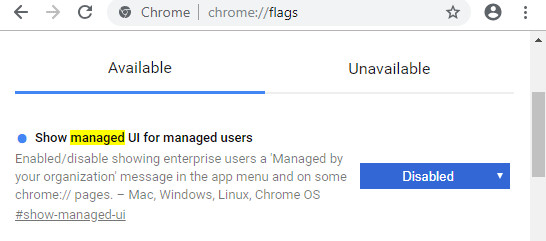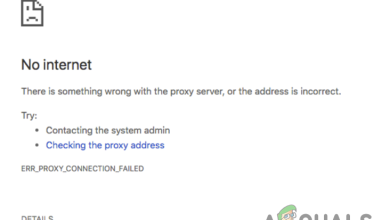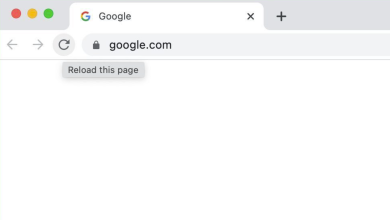How to Use Chrome Flags? Enable New Features!
Enable Experimental Features on Chrome! Try these Flags
If you consider yourself an advanced Chrome user, you should know that Google lets you enable a series of experimental features (referred to as flags). These are ‘hidden’ experimental features that will allow you to customize and adjust your browsing experience.
This article will show you how to enable Chrome Flags, how to use them, and what are the best flags to deploy to make your Chrome Browser better without making it unstable.

What are Chrome Flags Used For?
If you love experimenting with features that are not yet available to the masses, enabling Chrome Flags is a great way of getting access to new features that have not made their way to the standard version of Google Chrome.
Before Chrome developers will actually implement a new feature to their browsers, they will release it as a ‘flag’ – these flags can only be enabled by tech-savvy users that know their way around the ‘hidden menus’ of Google Chrome.
If you find the stable version of Google Chrome too boring, you should enable Chrome Flags and take some of the hidden features for a spin to spice up your browsing experience.
As you’ll see below, some of these experimental features have the potential of boosting your browser speed or even provide an extra accessibility layer.
Note: Chances are some of the flags you will see in this article will become native features part of the standard Chrome experience at some point while other flags might be removed by Google devs without any further notice.
Not Every Flag is good
At the time of writing this article, there are literally hundreds of flags that you can toggle on or off in your Google Chrome interface.
But there’s a catch – not every flag is made to enhance the Chrome experience and not every flag is meant to be used by regular users.
Some flags are specific to developers while others are severely undertested and might conflict with other components of your operating system.
Important: Depending on the flags that you will experiment with, you might find that some of them might end up bugging or conflicting with other components and negatively impact your PC’s performance. Effects might vary from a slight performance drop to extreme cases where you run the risk of losing your Chrome-related data – although these occurrences are very rare, it’s still important to understand the potential risks.
How do I turn on Google flags?
In order to access the experimental flags in Google Chrome, all you need to do is type ‘chrome://flags‘ inside the navigation bar at the top of your browser.

It’s important to understand that Google will always display a warning at the top of the list warning you that this page contains experimental features.
As you scroll down, you will first start to see the flags that are already user-enabled, then the remaining flags that are not yet enabled. If this is the first time you’re visiting this page, you will see the curated list of flags ordered by their release date.
Note: Each flag has its own name, short description, platform, and status. On top of this, every flag has a hyperlink link that allows you to jump right to it.
Although every flag has its own short description and name, in our experience is pretty hard to figure out what some of these flags actually do. Because of this, we recommend against enabling flags that you don’t have a clear idea of what they do.
If you are looking to enable a specific Chrome flag, the ideal way to do this is to search for it using the Search Flags bar at the top of the screen.

Note: Additionally, if you previously enabled flags and you want them gone all at once, you can click on the Reset all button, confirm your choice and wait until they are removed.
Now that you know how to enable Google Chrome flags, don’t go overboard and enable everything all at once without knowing what they do since you will have a bad time.
Instead, use our curated list of flags below – these are handpicked and guaranteed to add to your current Google Chrome experience.
Top 11 Google Chrome Flags You Should Enable
To spare you from having to do the trial and error yourself, we made a list of the best Google Chrome flags that really add additional functionality to your browser.
IMPORTANT: Keep in mind that the lineup of available Google Chrome flags changes daily, so chances are some of the flags you’ll end up seeing below might have already made their way to the stable release of Chrome while others might have been removed permanently.
Enable Lite Videos
This is a great flag to enable if you are forced to utilize a network with limited bandwidth.
What this flag essentially does is it will force all videos to play at standard quality. Under the hood, the flag will force every media request to be rendered in SD quality. By enabling it, you will lose some visual fidelity, but you’ll end up saving precious bandwidth.
You can enable this flag by searching for litevideos inside the search box at the top or by visiting the following URL: chrome://flags/#enable-lite-video
Playback Speed Button
If you’re streaming a lot of media content via your Chrome browser, enabling the Playback Speed button flag is a great way of adding an additional control layer to your media viewing experience.
This flag will add a playback speed button on all media controls. It works on Mac, Windows, Linux, Chrome OS, Android, and Fuchsia.
You can find this flag by searching for ‘Playback Speed Button‘ using the search box at the top or by visiting the following URL: chrome://flags/#playback-speed-button
Chrome Labs
If you’re looking to add an extra experimental layer of features on top of the extra functionality provided by individual flags, Chrome Labs should be on the top of your list.
This flag allows you to access the Chrome Labs interface directly through the toolbar menu. There, you’ll see a list of user-facing experimental features. This flag will work on Mac, Windows, Linux, Chrome OS, and Fuchsia.
You can find this flag by searching for ‘Chrome Labs‘ using the search box at the top or by visiting the following URL: chrome://flags/#chrome-labs
Show performance metrics in HUD
If you love seeing performance metrics when you use your computer, this flag will provide you with an extra layer of metrics that you can use to keep an eye on your performance.
What this flag essentially does is it will display a series of performance metrics on any current page that you have open. As soon as you enable this flag, you’ll start seeing the metrics inside the heads-up display of each page.
This flag will work on Mac, Windows, Linux, Chrome OS, Android, and Fuchsia.
You can find this flag by searching for ‘Show performance metrics in HUD‘ using the search box at the top or by visiting the following URL: chrome://flags/#show-performance-metrics-hud
Revamped Incognito New Tab Page
If you didn’t know, Google is currently working on a revamped user interface for the incognito of Google Chrome. This flag allows you to enable this feature immediately and enjoy the new icons and features that will come once the new Incognito UI finds its way to the stable release.
Note: This flag is likely to only be available temporarily until Google deems it fit enough to be added to the stable release.
Until then, you can enable it prematurely by searching for ‘Revamped Incognito New Tab Page‘ inside the search bar or by visiting the following URL: chrome://flags/#incognito-ntp-revamp
Accelerated 2D canvas
If you do legacy rendering on your PC and you’re working with a low-end GPU, chances are enabling this flag will make things a lot more bearable.
This flag allows your PC to rely on the GPU when it needs to perform 2D canvas rendering – this will be the preferred option instead of using the default software-based rendering. This flag can be enabled on Mac, Windows, Linux, Chrome OS, Android, and Fuchsia.
You can find this flag by searching for ‘Accelerated 2D canvas‘ using the search box at the top or by visiting the following URL: chrome://flags/#disable-accelerated-2d-canvas
Latest stable JavaScript features
This flag is a must if you are still heavily reliant on Java scripts and you are required to work on a lot of non-standard JavaScript extensions.
Enable this flag if the web pages you are visiting most frequently are still using legacy or non-standard JavasScript extensions. On the latest stable releases, these web pages might end up conflicting with the latest Javascript Features.
This flag will disable support for those features and enhance the compatibility with the web pages that you’re visiting. You can enable this flag on Mac, Windows, Linux, Chrome OS, Android, and Fuchsia.
You can find this flag by searching for ‘Latest stable JavaScript features‘ using the search box at the top or by visiting the following URL: chrome://flags/#disable-javascript-harmony-shipping
GPU rasterization
If you want to take the load off a low-end CPU and utilize your GPU to rasterize web content, you can enable this flag to see a small performance increase. This flag is recommended if you are stuck with a low-end CPU and you use your computer for web browser tasks that take up a lot of system resources.
You can enable this flag on Mac, Windows, Linux, Chrome OS, Android, and Fuchsia.
You can find this flag by searching for ‘GPU rasterization‘ using the search box at the top or by visiting the following URL: chrome://flags/#enable-gpu-rasterization
Parallel downloading
This flag is an ideal way of speeding up your file downloads. Don’t expect a drastic increase in the download speeds, but it will shave off a few seconds of downloading time of each file.
This flag manages to reduce the time it takes to download a file by splitting it into three separate jobs that run concurrently. You will see the best results when having to download big chunky files. You can enable this flag on Mac, Windows, Linux, Chrome OS, Android and Fuchsia.
You can find this flag by searching for ‘Parallel downloading‘ using the search box at the top or by visiting the following URL: chrome://flags/#enable-parallel-downloading
Elastic Overscroll
If you are using a device with a touchscreen or a precision touchpad, enabling this flag will give you an extra layer of control over your scrolling.
Do not enable this flag if you are using a display without a touchscreen or a precision touchpad since it won’t do anything for you. You can only enable this flag on Windows and Android.
You can find this flag by searching for ‘Elastic Overscroll‘ using the search box at the top or by visiting the following URL: chrome://flags/#elastic-overscroll
Cross-Browser Compatibility Issues with Chrome Flags
Before you start experimenting with flags that are not covered in this article, you need to understand the experimental nature of these flags.
On top of security concerns (since the majority of these flags are untested and vulnerable to exploits), you also need to worry about cross-browser compatibility issues.
The main reason why Google makes these flags available is so the community can test them before they’re made available to the stable release of Google Chrome. Final refinements and security concerns are usually done at the last stage (right before the flag is turned into a standard feature of Google Chrome).
Important: If you are a website developer or you’re the administrator of a site, we highly recommend that you don’t make any experimental flags available for your visitors. You are bound to run into issues as Google modifies the flag or decides to retire it entirelly.





